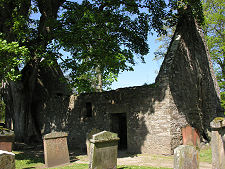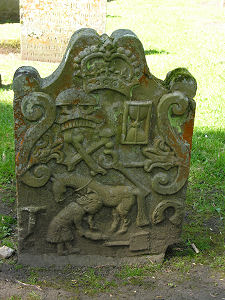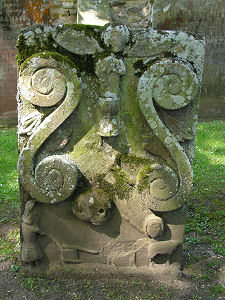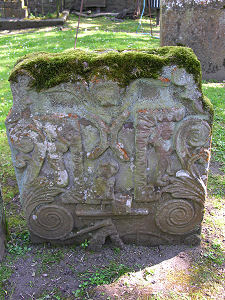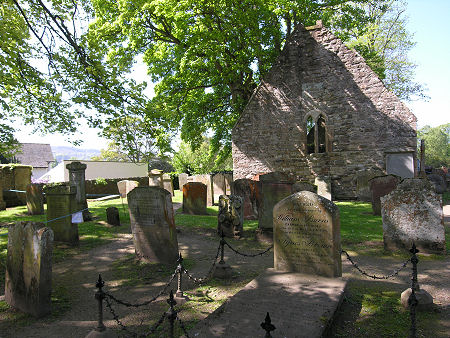 Old Kirk and Kirkyard from the Main Road. The grave in the foreground is that of Robert Burns' father. |
Can you name the most famous church in Scotland? That's probably an unanswerable question, though Greyfriars and St Giles' in Edinburgh are inevitably high on the list because of their historical significance, along with Iona Abbey. But if anyone were really to draw up such a list, then the church shown here would probably feature very strongly.
Auld Kirk Alloway carries a date suggesting that one stage of its building took place in 1516, though parts are thought to date back to the 1200s: including a stone grave slab later reused as a window lintel. The presence of a nearby well dedicated to St Mungo adds weight to the view that this may have been a place of worship from a very early date.
The Auld Kirk went out of use when the parish of Alloway was joined with that of Ayr in 1690, and, despite an effort to re-roof it in 1740, it has stood as a ruin for most of the intervening period.
So why would this church be so famous? Because when Scotland's greatest poet, Robert Burns, published his greatest poem, Tam o' Shanter, in 1791, he used the ruin of Kirk Alloway as the setting for the gathering of witches and warlocks that, when he gives away his presence, then pursue Tam and his gray mare, Meg, as far as the Brig o' Doon. You can read the full text of the poem, in both its original Scots and English, and in English translation, here.
Robert Burns probably played in the ruin of the Auld Kirk as a child, being born in a cottage only a short distance away. His Kirk Alloway was a place of ghosts and spirits, a place that passing travellers were wary of passing at night.
The kirk itself is a hollow roofless box, whose interior measures some 40ft by 20ft. The main items of interest inside the church are a pair of iron mortsafes. These devices were meant to be locked in place over a grave to stop "resurrectionists": grave robbers who would dig up fresh corpses for medical research. This remained a serious problem throughout Scotland until the passing of the Anatomy Act in 1832.
The kirkyard is much more interesting than the kirk itself. Greeting the visitor as you enter is the grave of Robert Burns' father, William Burnes (though the gravestone uses the spelling of the family name preferred by Robert and his brother). In the rest of the graveyard there is a an exceptional collection of pictorial gravestones. These can be found right across Scotland, but you seldom see them as well carved, or in such good condition, as here. In some cases the occupation of the person buried underneath is obvious from the pictures carved on the gravestone: and the stones of a blacksmith and a miller are amongst the best you will see anywhere in Scotland. Many gravestones also carry an engraving of an hour-glass. If this is upright, the person buried underneath died a natural death. If it is lying on its side, then they died "before their time".
Against the background of Burns' poem and the long tradition of local ghost stories that inspired it, today's visitor to the Auld Kirk might expect to feel a certain chill, even on the sort of bright, warm day illustrated here. The almost disappointing truth is that Auld Kirk Alloway has an unassuming, slightly sad feeling, but certainly doesn't seem in any way threatening. On the other hand, if you had come across it at night and in a thunderstorm, and in the days before streetlights, it might have had an altogether different feeling...
Auld Kirk Alloway comes under the umbrella of the Robert Burns Birthplace Museum. Operated by the National Trust for Scotland, this magnificent museum is well worth a visit in its own right, and it also brings together all the places associated with Robert Burns in Alloway. These include Brig o' Doon, the Burns Monument and Memorial Garden, and Burns Cottage.
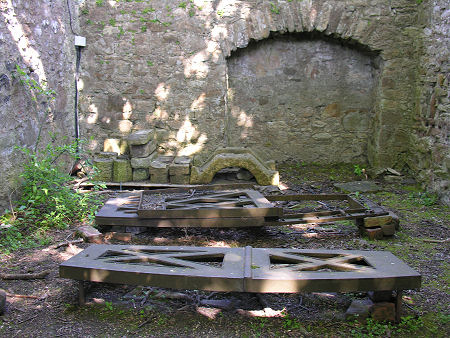 Interior of the Kirk Today, complete with Mortsafes |

|
|
|
Visitor InformationView Location on MapGrid Ref: NS 332 181 www.burnsmuseum.org.uk |
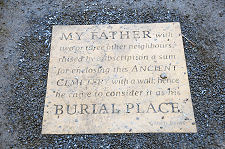 Flagstone Quotation |
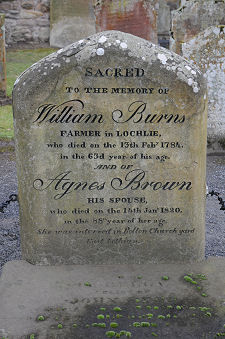 William Burns' Gravestone |
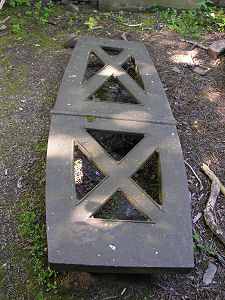 Mortsafe |
